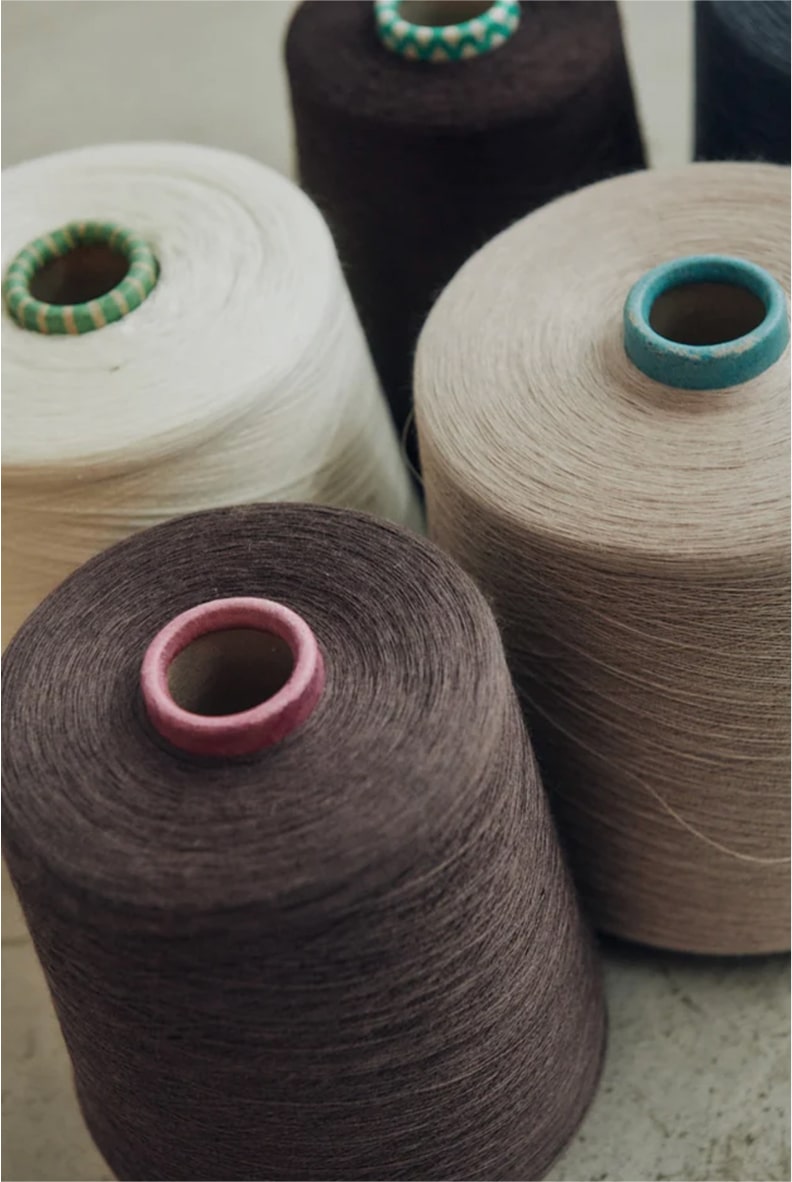
Sustainable fabrics and organic fibres: the nature on your skin
Discover the importance of sustainable fabrics and organic fibres in fashion. Organic cotton, linen, and other eco-friendly fibres are revolutionising the fashion industry, promoting a greener and healthier future and ensuring the well-being of our skin.
Index
- The revolution of sustainable fabrics in fashion
- Natural textile fibres and their characteristics
- Organic fabrics: what they are and why choose them
- What are the most sustainable fabrics?
- Health benefits of natural fibres
- Wear nature, choose Oscalito
In the modern era, fashion has transformed into a powerful tool of environmental responsibility. Sustainability, once a marginal concept in the fashion industry, now occupies a central position in the global debate.
As experts, designers, and consumers become increasingly aware of the environmental impact of their fashion choices, sustainable fabrics and organic fibres are emerging as key elements of a quiet but impactful revolution towards a more planet-friendly approach to fashion.

The revolution of sustainable fabrics in fashion
In recent years, the fashion industry has witnessed a radical change. Brands like Patagonia, Reformation, and Stella McCartney were among the first to promote and try to adopt eco-friendly and sustainable production methodologies.
This trend, initially adopted by a few, is now spreading widely, involving an increasing number of brands revising their production practices to reduce their environmental impact. Today, a piece of clothing is evaluated not only for its design and price but also for its ecological footprint, marking a new chapter in the history of fashion.
Natural textile fibres and their characteristics
Natural textile fibres form the fundamental pillar of the new era of sustainable fashion. Materials such as cotton, linen, hemp, silk, wool, and innovations like bamboo and recycled fibres represent some of the most ecological choices available. These fibres are generous gifts from nature, known for their durability, softness, and breathability, as well as their lower environmental impact.

What is the difference between synthetic and natural fibres?
Synthetic fibres, unlike natural ones, are produced through chemical processes from polymers derived mainly from petroleum or natural gas. These fibres, such as polyester, nylon, and acrylic, are known for their durability and versatility, but they have a higher environmental impact due to their energy-intensive production process, non-biodegradability, and the release of microplastics.
In contrast, natural fibres that come from plants or animals derive from renewable sources (provided that natural regeneration times are respected) and are fully biodegradable, significantly contributing to pollution reduction.
For their production, natural textile fibres require less energy and therefore have an overall lower environmental impact compared to synthetic ones.
Choosing clothing made with natural fibres is not only an ecological choice but also implies greater comfort and quality, as well as health and wellness benefits, reducing the risk of allergies and skin irritations. This awareness is driving a significant change in fashion consumption, guiding consumers towards more environmentally and health-conscious choices.
Organic fabrics: what they are and why choose them
Organic fabrics are defined as such when the fibres they are made from come from crops that meet organic farming standards, the same principles applied in the food sector.
This type of farming follows strict rules to protect human health and the environment and is considered one of the key strategies in the fight against climate change.
In organic farming, plants are grown and raised naturally, avoiding the use of harmful chemicals to our health and the environment. This means excluding the use of synthetic pesticides, fertilisers, and herbicides, preferring natural substances or man-made mixtures designed to generate a positive environmental impact or at least not cause harm.
To be classified as "organic fabrics," certification is required to attest to their origin from organic farming. This certification ensures that sustainable and environmentally friendly practices have been observed throughout the production process.

Choosing organic fabrics is not only an ethical choice aimed at safeguarding the environment but also represents a benefit to personal health. The absence of harmful chemicals in the cultivation processes ensures that garments made from these fibres are safer and healthier for the wearer, reducing the risk of allergic reactions and skin irritations. Furthermore, opting for organic fabrics is an important step towards a more sustainable and conscious lifestyle, actively contributing to the protection of our planet.
What are the most sustainable fabrics?
Among the most sustainable fabrics, organic cotton and linen undoubtedly stand out. Why? Due to their ecological properties and versatility in use.
Organic cotton is distinguished by its reduced water and energy consumption compared to conventional cotton, contributing to a smaller water footprint in the production process. This type of cotton is grown without the use of harmful pesticides or chemical fertilisers, making it safer for the environment, agricultural workers, and final consumers.
Check out these soft and breathable cotton t-shirts by Oscalito!
Linen, on the other hand, is known for its extraordinary durability and ability to grow in less fertile soils, reducing the need for water and chemical fertilisers. This natural fibre has a shorter life cycle compared to other crops, meaning it can be regenerated more quickly. Moreover, linen is completely biodegradable and recyclable, making it an excellent choice for those seeking sustainable alternatives.

Beyond organic cotton and linen, other sustainable fabrics include hemp, bamboo, Tencel (lyocell), and various types of recycled fibres. Hemp, for example, is a durable fibre that requires very little water to grow and has a positive impact on soil structure. Bamboo, with its rapid growth and ability to regenerate naturally, is another eco-friendly fibre gaining popularity. Tencel, produced in a closed-loop process, uses less water and energy compared to traditional artificial fibres and is praised for its softness and versatility.
These fabrics are used not only in clothing collections but also in home furnishings and other textile products, such as bed linens and towels. They offer consumers a wide variety of sustainable choices that do not sacrifice aesthetics or quality, allowing them to adopt a more environmentally friendly lifestyle.
From organic cotton used for soft and breathable t-shirts, to linen used in elegant clothing and home linens, to hemp used in durable bags and accessories, these fibres represent the future of a more sustainable and conscious fashion industry.
Health benefits of natural fibres
The use of natural fibres in textiles brings numerous health benefits, making them a preferred choice for consumers attentive to personal well-being as well as those sensitive to environmental issues.
The natural fibres we have seen, such as cotton, linen, wool, and silk, are known for their breathability, reducing the risk of skin irritations and allergies that often accompany the use of synthetic fabrics, which typically have a higher concentration of chemicals used in their production.
Unlike other fibres, which can trap heat and moisture against the skin, natural fibres allow for better air circulation, keeping the body cool and dry, even if they require time to dry should they absorb excess heat in the form of sweat.

Natural fibres are pleasant, soft, and gentle on the skin, particularly beneficial for those with sensitive skin or conditions such as eczema or psoriasis. For example, cotton, free of harmful chemical residues, is extremely comfortable on the skin and is often recommended for babies and people with sensitive skin. Similarly, wool, particularly merino wool, is appreciated for its thermoregulating properties, helping to maintain a stable body temperature, beneficial in both cold and warm conditions.
Discover the tops and tank tops in pure wool in the Oscalito collection.
In addition to these direct benefits, choosing natural fibres contributes to a healthier environment, reducing exposure to harmful and potentially toxic chemicals present in the production processes of synthetic fabrics. This aspect is particularly important considering that our skin, the largest organ, is in constant contact with the fabrics we wear.
Therefore, opting for natural fibres is not only an ecological choice but also a step towards a healthier and more conscious way of living.
Wear nature, choose Oscalito
In this article, we have seen how the importance of sustainable fabrics and natural fibres extends not only to their positive impact on the environment but also to tangible benefits for personal health and well-being.
Oscalito is at the forefront of the sustainable fashion movement, beneficial for the Planet and our bodies, demonstrating for years how it is possible to combine respect for nature with the creation of high-quality and stylish products.









